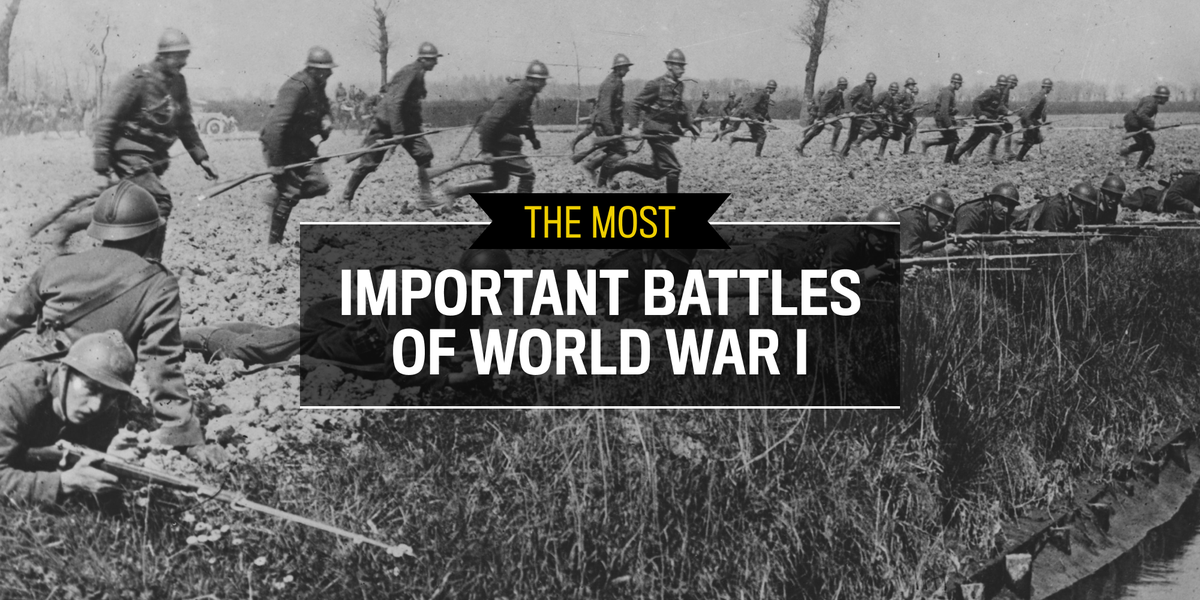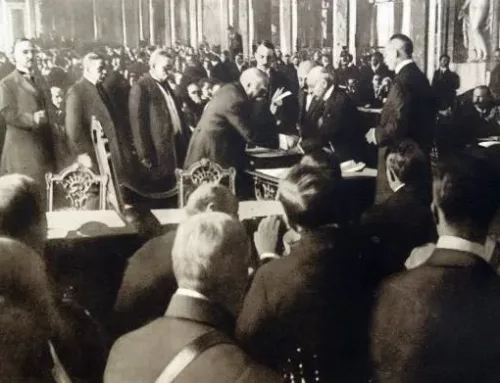The 10 Most Important World War I Battles
Published: 14 April 2023
By Kyle Mizokami
via the Popular Mechanics web site

Most Important World War I Battles
10 Most Important World War I Battles
The Great War pivoted on a handful of turning points at sea, in the air, and on the ground.
World War I was the first continent-wide European war since the Napoleonic Wars a century before. It introduced industrial warfare to Europe, with masses of armies, the mechanization of transport, and the introduction of aircraft and chemical weapons. An emphasis on attrition over maneuver resulted in grinding trench warfare that only ended when one side, Germany, exhausted itself and requested an armistice. These are the ten World War I battles that would shape history forever.
1 First Battle of the Marne

Postcard of the First Battle of the Marne
The First Battle of the Marne, taking place from September 5–September 12, 1914, was an Allied counteroffensive designed to throw back advancing German forces, which had invaded Germany and Belgium, reaching the outskirts of Paris—the capture of which would deal a severe blow to the Allies.
Discovering a 30-mile gap between the German First and Second Armies, Allied forces raced to attack, sending in the British Expeditionary Force (BEF) and the French Fifth Army. German forces recoiled 40 miles to avoid being flanked, and the counteroffensive was such that German commanders briefly thought they had lost the war. German and French forces each suffered approximately 250,000 casualties, with the BEF suffering 13,000.
2 Battle of Tannenberg

Battle of Tannenberg
Germany and Russia fought the Battle of Tannenberg on World War I’s Eastern Front. The battle took place between August 23–August 30, 1914, shortly after the start of the war itself, and was an attempt by the German Army to defang Russian armies marching westward on Germany. Germany’s ability to reposition troops quickly using its rail network, also known as utilizing internal lines, allowed it to confront the advancing Russian 1st and 2nd Armies sequentially.
Russia’s splitting of its two armies to attack in separate directions rendered them unable to provide mutual support. This let the Germans maul the First Army and then encircle and destroy the Second Army. Thirty-thousand Russian troops were killed or wounded, and another 90,000 were captured, with fewer than 20,000 Germans killed, wounded, or injured.
Read the entire article on the Popular Mechanics web site.
External Web Site Notice: This page contains information directly presented from an external source. The terms and conditions of this page may not be the same as those of this website. Click here to read the full disclaimer notice for external web sites. Thank you.



